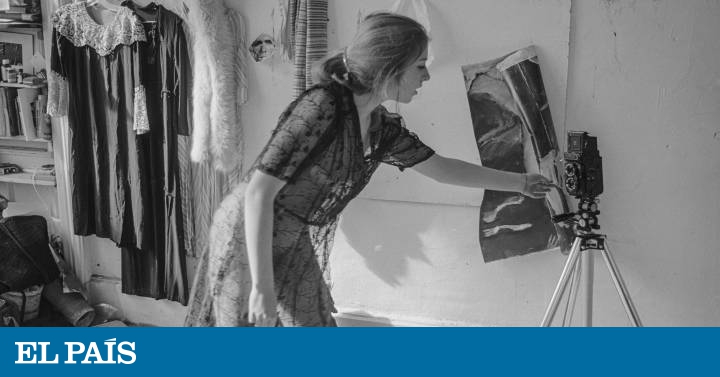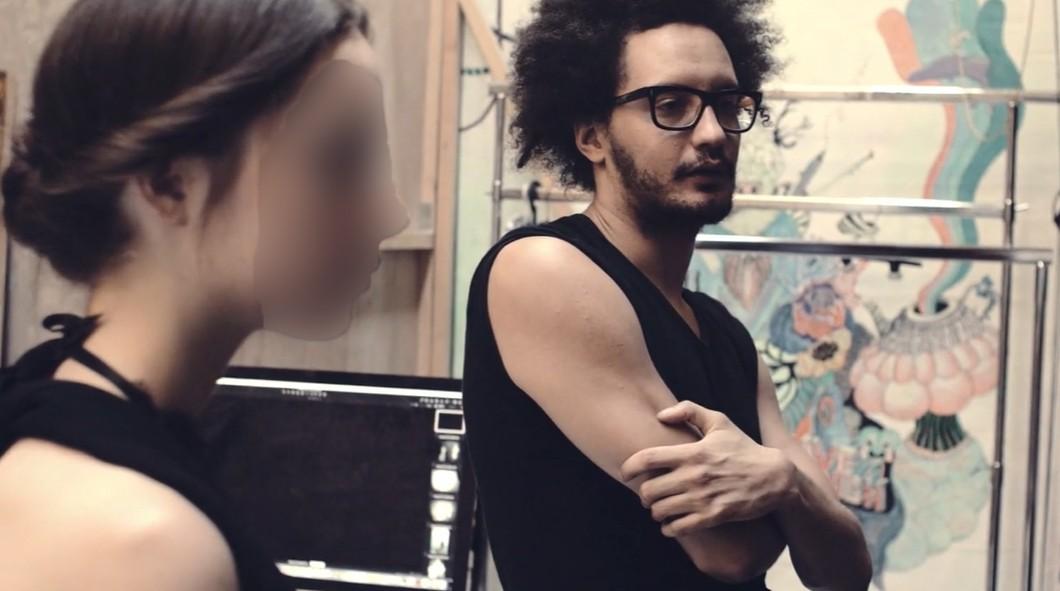It is practically impossible to find an article about Francesca Woodman (Denver, 1958-1981) in which there is no mention of her tragic ending. On that January 19, when, at the age of 22, the enigmatic artist, a victim of depression, threw herself into the void from the roof of a building near her studio on the New York East Side. It was then that his legend was hatched. It transcended her aura as a romantic and cursed artist captured in more than 800 images, often interpreted within the context of her misfortune.
The suicide episode does not appear in the monograph Francesca Woodman: Portrait of a Reputation. Published by Rizzoli Electa, it gathers the material that the photographer George Lange, a fellow student and close friend of the artist, treasured in a box. It closed months after Francesca's death and until 2017 she could not reopen it. It contained six years of a close friendship: innocent letters, casual notes, and an invitation to tea; also dozens of prints on paper that the young artist left behind when she decided to move to New York, as well as contact sheets, which her partner instinctively managed to pick up and save; some 45 photographs that he himself took and that collect the daily life of the artist, as well as a postcard written from the Maldoror bookstore - specialized in the work of the surrealist movement -, where the author showed the first of her only two exhibitions. "She was the first true artist I met," admitted the photographer in a talk organized by the Denver Museum of Contemporary Art, where an exhibition held parallel to the book's release and with the same title closed last week.
Lange met Woodman in 1976 at the Rhode Island School of Design (RISD). "It was authentic. He lived his art. It resembled his art. It expressed the vocabulary of art ”, writes the photographer. “Francesca was that fragile friend that one cannot refuse to help, and she was also one of those friends that few have. It could be troublesome. His apartment on Maine Street had no kitchen, no bath or shower. It was the cabin that you see in his photographs. I lived on the hill, two blocks from her apartment, and shared a room with Sloan Rankin, her best friend. We looked after Francesca; not out of charity, but simply by inviting her to use the shower, feeding her, and with our friendship. Francesca went into the bathroom and let the hot water run until it was exhausted, while the steam escaped from under the door. Then she would go out in her underwear, wrapped her hair in a big towel, ready for a tuna feast. ”
As a whole, the monograph represents a critical review of the photographer's student years (between 1975 and 1978) during which, prematurely, she found her voice. It should be noted that much of his work corresponds to these years, so that the posthumous critical appreciation of his career - then practically unknown - and the subsequent artistic status he acquired, is truly surprising. It places the author as a rare bird in photography, where premature recognition is not abundant. But fundamentally the book supposes an approach to the artist, "as a person rather than as a myth", as pointed out by Nora Burnett Abrams, curator of the exhibition and author of one of the texts included in the book. "It is the reflection of a brilliant and immensely creative and determined personality, but also of a very sweet, sensitive and funny young woman."
He worked obsessively. “There was hardly any difference between his life and his art, in the sense that art was his way of experiencing life. The material in the book is proof of this, "says Abrams. It was her parents, George and Betty Woodman, he painter and she sculptor and ceramist, who instilled in her that concept of art as a religion. From an early age she was independent and self-confident. He started practicing photography at age 13. His father gave him a camera. He would soon begin to train his notorious compositional ability, and an imagination kindled by his fascination with Gothic literature. It became the main motif of a play, mainly done in black and white, where the influence of surrealism is also appreciated through a delicate and mysterious staging. Body boundaries tend to blur in his photography, where Woodman appears to be as physically present as he is absent. “His photography is enigmatic, unfinished, invites many questions, but does not offer answers. He was always devising different scenarios, both inside his studio and outside, where he could carry out his performances . There was an attempt on her part to incorporate movement into an essentially static environment, giving it a more active dimension, "adds the curator.
Although she was given to writing, she died without leaving hardly any written statements about her work, hence "her tragic end has greatly influenced the way in which people respond to her work," says Abrams. “Many people tend to decipher their mental health or death through what they observe in their work. Some tend to see an emotional intensity, a darkness, or a complexity in Francesca simply derived from the way she died. I think this is a wrong assumption. One cannot get to know another person based on their artistic work and, much less, try to observe it as a reflection of their mental state. Woodman's purpose for his work is partly unknown. But that lack of clarity or certainties does not necessarily lead to the conclusion that she was confused in her approaches or emotionally unstable. I personally think that she was very sure of herself and that she was extremely ambitious, but I do not consider it appropriate to see an autobiographical reflection in her work ”.
"It is a matter of convenience. I am always available ”, the artist joked in her diary. Thus, the images in which it makes use of other models are few in comparison. "She used herself as an object," says Abrams. “I am reluctant to label these images as self-portraits. Without images where we can see his face and body, but they do not seem to show any intention of self-scrutiny. I think she was interested in the body, how to manipulate it in front of a camera, but not necessarily in exploring her own body. He was looking for a broader effect within his own sense of performance . "
“What is refreshing about this project is that it shows a young woman full of life and vitality, with a great sense of humor and personality. It is not about his death, but celebrates his life, "concludes the curator. We see Woodman putting his ideas into practice, polishing concepts, sharing experiences and beliefs with his colleagues. Thus, in the same way that the book does, this article also avoids stopping at the most indecipherable part of the author's life, not without referring to the documentary The Woodmans. Directed by C. Scott Willis, and through the testimony of his parents and brother, as well as some of his closest friends, a fragile and sensitive psyche is emerging, seasoned by the unstoppable ambition of a creative ego. Something that George Woodman refers to as "the physical risk of being an artist."
"My memories of Francesca are light and fun," writes Lange. “I see her floating above the ground (or perhaps brushing him in her Chinese slippers) instead of stomping, as we do the rest. Her voice was very sharp, as well as quiet, but sweet. I still hear it. ”
Francesca Woodman: Portrait of a Reputation. Posted by Rizzoli Electa. 176 pages. 50.30 euros.
Here you can see the photo gallery 'Francesca Woodman: portrait of a reputation'















